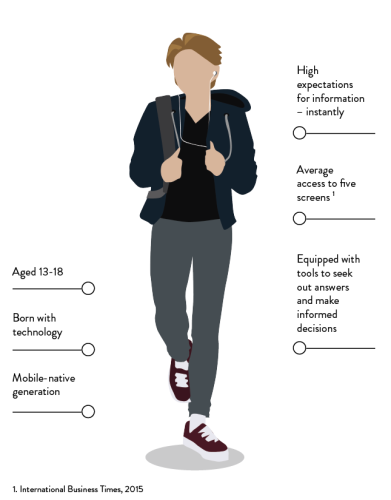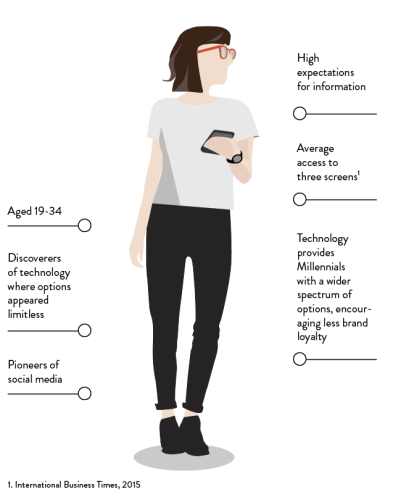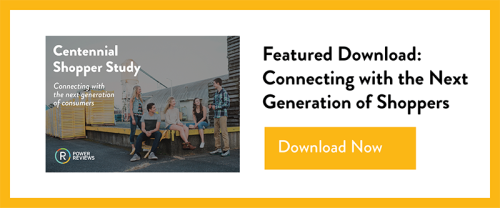For the past several years, marketers have spent countless hours trying to figure out how to woo Millennials, that always-connected (and often criticized) generation of consumers age 19-34. Yet, most brands still haven’t managed to crack the code.
But enough talk about Millennials. The next generation of shoppers are growing up fast and could be set to change everything. Marketers, meet the Centennials.
Who are Centennials?

Centennials — also known as Generation Z — are a new generation of consumer who are self-aware, savvy and equipped with technology. Born around the turn of the century, they are the first mobile native generation. They don’t remember a time when a connected world wasn’t at their fingertips. Different from previous generations, technology isn’t exciting – it’s expected.
And they expect to access information instantly. The average Centennial has an attention span of eight seconds (one second shorter than the attention span of a goldfish). If you don’t manage to engage with Centennials in that short window of time, they’ll quickly move on to someone who will.
Distinguishing Centennials and Millennials
While Centennials were born with technology, Millennials discovered it. Millennials grew up with the high-pitched tones of dial-up internet at home, they had their first mobile phones as teenagers and watched social media develop from MySpace to the vast social networks of today dominated by Facebook, YouTube, Twitter and Instagram.
Their discovery of technology impacted their consumption habits as well as their expectations. Millennials came of age during some difficult times; the recession began as many were starting their careers and they were also part of the credit era – with easy access to credit cards and loans making large purchases more attainable.

It’s no surprise that the demands of Centennials have naturally evolved from that of Millennials. Recently, PowerReviews surveyed more than 1,700 Millennial and Centennial consumers to better understand the differences and similarities in their shopping habits. We found that there is one major difference marketers need to be aware of: while nearly all Centennials do their shopping research online, more prefer shopping in-store. We also discovered that online reviews are more important to Centennials than Millennials with 95% reading reviews, and nearly two thirds reading at least four reviews before they buy.
Why Should Brands and Retailers Care About Centennials?
Today, Centennials make up a quarter of the population, and already, these young consumers have $44 million in annual spending power. By 2020, this generation will make up 40% of the population, and their spending power will continue to grow exponentially.
Influencing Centennial conversation is key for brands and retailers looking to cultivate revenue and loyalty. Now’s the time to better understand the shopping habits of this next generation of consumers and use that knowledge to hone your marketing plans to best influence this demographic. Centennials are empowered with the tools to make their own decisions and find solutions, and unless brands and retailers work with them, they’ll be left behind.





